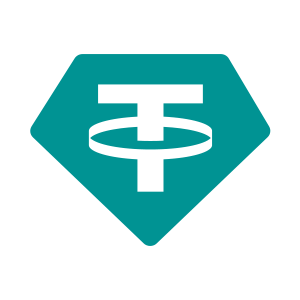- Back to menuNews
- Back to menuPrices
- Back to menuResearch
- Back to menuConsensus
- Back to menuSponsored
- Back to menu
- Back to menu
- Back to menuResearch
- Back to menuWebinars & Events
- Back to menu
About Tether
Tether (USDT) is a stablecoin, a digital currency that is pegged to the value of US dollar. It is issued by a centralized company called Tether and is used to minimize volatility in an investor's portfolio. It is also widely accepted as a payment method and is supported on multiple blockchains. USDT is often used in conjunction with cryptocurrency debit cards and is popular in the decentralized finance (DeFi) space for lending and borrowing. It is the third-largest cryptocurrency by market capitalization and is backed by reserves in cash and cash equivalents, allowing token holders to redeem their USDT for USD. Tether has also issued other stablecoins pegged to the value of other fiat currencies and commodities, such as the Chinese Yuan, the Euro, and gold.
The primary purpose of a stablecoin like USDT is to maintain its value of $1 at all times. Maintaining that value should be straightforward as every USDT is backed by reserves held by the Tether Treasury. However, Tether’s asset has seen some price fluctuations over the years.
USDT hit an all-time high value of $1.32 in July 2018. The all-time low of $0.57 came in March 2015. The price swings occur when demand for the token changes. When the crypto market is surging, demand for stablecoins like tether is typically low. Tether’s history of lawsuits has also played a part in reducing demand for the crypto asset. When the New York Attorney General’s office (NYAG) first took legal action against the project, USDT was pushed off its dollar peg by 3%.
With the exception of those low and high prices, Tether’s price has generally remained close to $1. There can be a minor deviation of $0.01 or $0.02 at times, although those are usually short-lived.
There is no known maximum supply for Tether’s USDT, as new coins are issued based on user demand and reserves held by Tether.
Tether and the tokens it creates are designed to be stablecoins pegged to real-life assets or commodities to provide stability in value, particularly in volatile markets. Tether’s USDT is pegged to the U.S. dollar, but whether the crypto’s reserves consist of actual dollars, or similarly safe assets, has been the subject of contention. In October 2021, Tether paid a $41 million fine to settle allegations by the U.S. Commodity Futures Trading Commission that it lied about its digital currency being supported by fiat currencies. Tether has agreed to provide regular attestations and audits of its reserves, which were found to be held in such risky investments as loans and other cryptocurrencies, instead of cash or cash equivalents.
Tether launched on Bitcoin’s Omni Layer, but continues to expand to other protocols, including Ethereum, Bitcoin Cash, TRON, EOS, Liquid Network, Algorand, SLP, and Solana. Ethereum and TRON are the blockchains with the most USDT supply. Tether is often used to buy and sell different cryptocurrencies.
